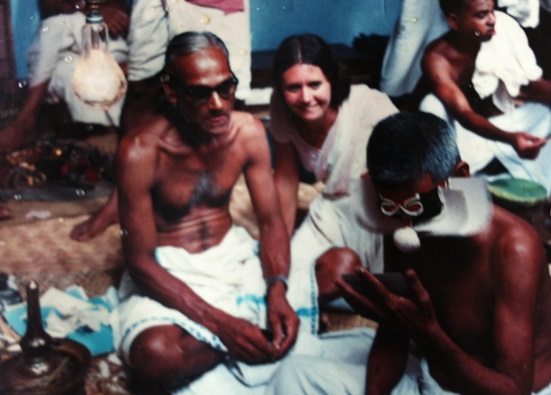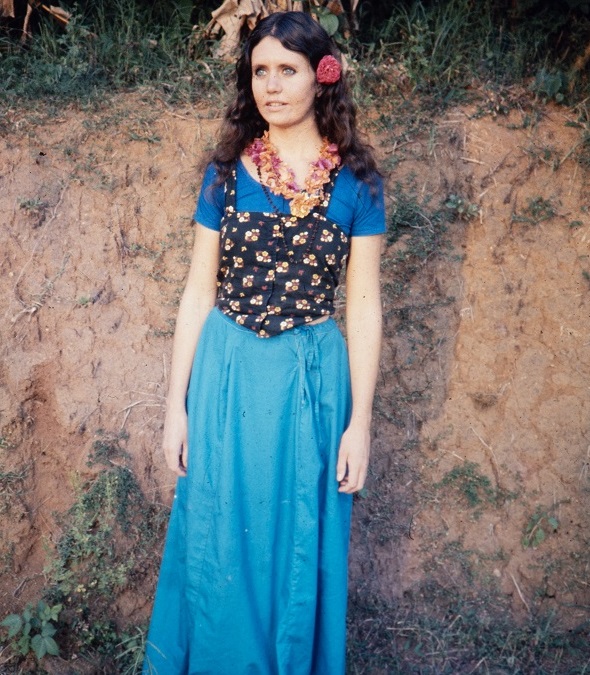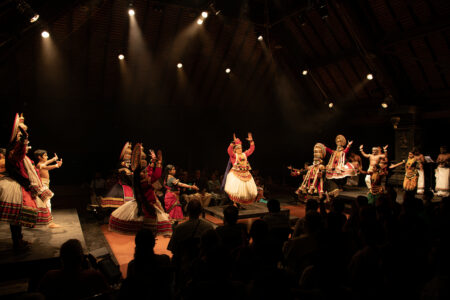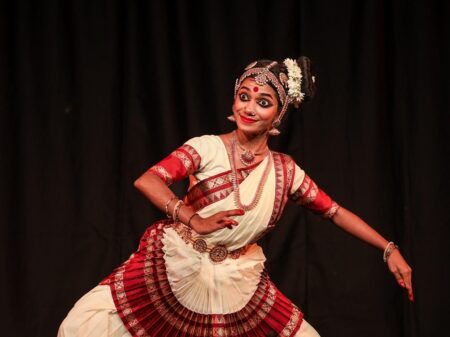Establishing Kathakali as an art form among the UK audience was not an easy process. It is a story of strong determination, enormous passion, heavy skillset and devotion of The Kala Chethena Kathakali Company
It is true that forty years ago, the UK was a bleak and alien land for Kathakali. The art form was rarely seen in Britain.
Cut to 2021. The situation is much different. Kathakali is a well established art form now. Thanks to the serious initiatives by ‘The Kala Chethena Kathakali Company, to bring this art form to the people of Britain. Founded in 1987, at Southampton, England, the company organises workshops, educational and community programmes, training, exhibitions of costumes and conducts tours to promote Kathakali across Britain.
Earlier interventions
The Kerala Kalamandalam troupe had visited the UK several times and presented excellent Kathakali performances. However, there was no sharing of culture or interaction with the local communities. The artists arrived by plane, went to their hotel, travelled to the theatre, performed, did some sight-seeing and then finally flew back to Kerala.
These visits brought quality Kathakali to this country. But what did they actually do to establish the art form and the culture of Kerala in Britain? Something had to change if Kathakali was to become established in this alien land.
Setting up the company
I returned to Kerala from Britain, in 1986. I happened to meet many young talented artists with no financial, creative or emotional support to develop their career. So over the next few weeks I decided to arrange a Kathakali tour of the UK to financially support Kathakali artists who were struggling.

Barbara with her Guru Govinda Warrier Ashan 
Barbara during her Kerala Kalamandalam days.
Along with my husband and Kathakali actor, Kalamandalam Vijayakumar, we founded ‘The Kala Chethena Kathakali Company’ specifically to bring Kathakali to the people of Britain.
In the following years, the company toured all over the UK, developing a strong educational programme, establishing a good professional reputation and acquiring an excellent relationship with promoters in theatres, museums, art galleries, schools and universities. The company had a minibus, lights, sound, stage set and most of all knowledge of Kathakali and experience in touring.
This was possible because after studying art at Winchester School of Art in England, I studied Chutti as a full-time student at the Kerala Kalamandalam under the guidance of the legend, Kalamandalam Govinda Variyar Ashan. I graduated in 1976, and became the first female Kathakali chutti artist in the world.
Earlier I have founded a visual performance art company called Centre Ocean Stream. The aim was to explore the abstract idea of “Living Colour” through performance.
Five Kumars
Vijayakumar was a student at the Kerala Kalamandalam for 11 years(1975–86) under the guidance of Kalamandalam Padamabhan Nair ashan. He was part of the last batch of ashan’s students known as the five Kumars, Vijayakumar, Krishnakumar, Udayakumar, Jayakumar and Harikumar.
After graduation Vijayakumar wanted to keep all the artists together. Thus he co-founded the Nadanakalodhayam in Cheruthuruthy along withJayakumar. This small group started to perform all over Kerala and young artists were able to gain valuable experience.
By keeping the artists together they could grow as a group and Kathakali would benefit. Four of the famous Kumars were part of the Kathakali UK Tour 1988.
With my savings I purchased a full set of Kathakali costumes for the UK Tour. Under the management of Vijayakumar the costumes were restored and brought to the UK.
This full set of costumes will be donated to the Victoria and Albert Museum in London as part of their Asian Theatre Department. The museum is the most famous for costumes in the world.
Kathakali being part of their collection will preserve these sacred costumes for future generations.
Making Kathakali intelligible
In 1988, an excellent tour was arranged and everything sounded perfect but it wasn`t. People were captivated by the costumes and make up but they could not understand the mudras, the characters, the stories or the culture so there was a lot of work to do to make Kathakali accessible, understandable and enjoyable to the people of this country.
The first challenge was to raise the huge amount of money required to bring twelve artists from Kerala to the UK. Most UK promoters would not attempt to tour authentic Kathakali due to the high costs involved. We had to use our own savings to conduct workshops, demonstrations, solo performances and exhibitions to support the full company tours.
There were cruel gossips and insulting comments. It took 18 months of hard work to arrange a ten-week Kathakali tour. To make Kathakali more accessible and welcoming in the UK, we need to answer people’s questions and enable them to explore Kathakali on their level.
At the same time the culture of Kathakali had to be preserved. In the early days we rejected a lot of work because it undermined the integrity of Kathakali such as parading in the streets in full costume.
(To be continued)



